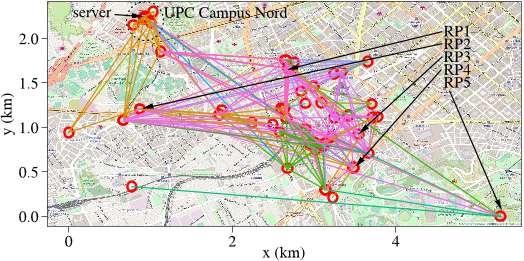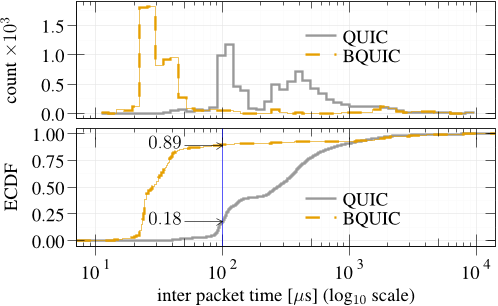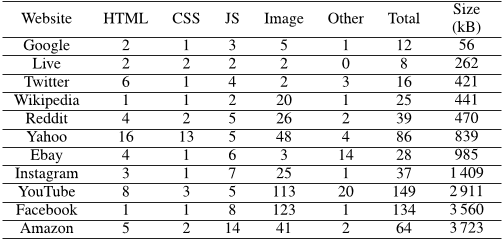




Did you find this useful? Give us your feedback














9 citations
2 citations
...[392] showed that QUIC achieves sub-optimal throughput in WiFi networks....
[...]
1 citations
610 citations
...In a recent measurement study [3], it was estimated that around 7% of the Internet traffic is QUIC....
[...]
422 citations
...11 standards, have undergone an enormous evolution in the recent years [2]....
[...]
380 citations
...Their impact on throughput have also been extensively evaluated [7], [6], [8]....
[...]
...A detailed description of these concepts can be found in [6]....
[...]
239 citations
...Their impact on throughput have also been extensively evaluated [7], [6], [8]....
[...]
144 citations
...al [10] investigated the impact of increasing the TCP delayed acknowledgement mechanism to more than two segments as recommended by RFC 1122....
[...]
In this paper the authors experimentally analyze the performance of QUIC in WiFi networks. The authors perform experiments using both a controlled WiFi testbed and a production WiFi mesh network. In particular, the authors study how QUIC interplays with MAC layer features such as IEEE 802. 11 frame aggregation. The authors show that the current implementation of QUIC in Chromium achieves sub-optimal throughput in wireless networks. Indeed, burstiness in modern WiFi standards may improve network performance, and the authors show that a Bursty QUIC ( BQUIC ), i. e., a customized version of QUIC that is targeted to increase its burstiness, can achieve better performance in WiFi.
since a large window is acknowledged by each ACK and pacing is disabled, a burst of packets is released shortly after an ACK is received.
lowering the ACK frequency increases burstiness of traffic as the sender releases a micro burst of packets after receiving the cumulative ACK.
Considering the role of TCP acknowledgments for the protocol reliability, reducing the acknowledgement frequency and performing delayed cumulative acknowledgements may provide benefits in wireless networks.
The nodes use the linux/openwrt [18] based distribution provided by the Quick Mesh Project (QMP) [19], which runs the BMX6 mesh routing protocol [20].
There are concerns about the impact of high burstiness on packet drops and queuing delays in wired networks, particularly in long Internet paths.
To automate the page loading the authors use Chrome-HAR-capturer1 to connect to remote clients in the lab or WMN and repeatedly load the pages multiple times while capturing traffic at both client and server sides.
Singh et. al [11] propose TCP with adaptive delayed acknowledgement, which aims to reduce the number of ACKs to one per congestion window.
Two aspects of QUIC implementation particularly influence how the protocol interacts with 802.11 frame aggregation: (i) acknowledgment modes, and (ii) packet pacing.1) QUIC acknowledgment modes: Chromium’s implementation of QUIC includes two acknowledgment modes:• TCP ACKING:
The authors show, for example, that since QUIC runs on user-space it incurs performance penalties particularly for mobile devices that are usually constrained by processing power.
Oliveira el. al [12] propose Dynamic Adaptive Acknowledgement where the delay window is adjusted according to the channel condition.
This is mainly because the antenna gain of the RPi is higher than in the smartphone, and thus, the network card can use MCS with higher bitrates during the transfer.
the standard deviation of the throughput measured at 50 ms intervals increases only from 8.5 in QUIC to 9.1 in BQUIC (7%).
The pacing rate is decided by QUIC on the fly depending on the link conditions such as bandwidth, RTT etc., and varies between different nodes in the mesh and even different runs using the same node.